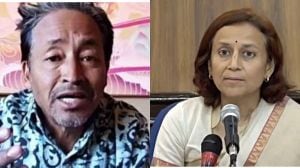Focus more on deposit mobilisation via innovative products: Shaktikanta Das to banks
Das also expressed worries over banks and non-banking finance companies (NBFCs) not following regulatory norms while offering top-up loans on other collaterlaised loans such as home and gold loans.
 Shaktikanta Das, Governor of RBI
Shaktikanta Das, Governor of RBIAmid concerns over the shift of household savings from banks to alternative investment avenues, resulting in slower deposit growth compared to credit, Reserve Bank of India (RBI) Governor Shaktikanta Das on Thursday asked lenders to garner deposits through innovative product offerings and use their wide branch network.
Das also expressed worries over banks and non-banking finance companies (NBFCs) not following regulatory norms while offering top-up loans on other collaterlaised loans such as home and gold loans. While announcing the monetary policy, the Governor said that it is observed that alternative investment avenues are becoming more attractive to retail customers and banks are facing challenges on the funding front with bank deposits trailing loan growth. As of July 12, while deposits grew by 11.7 per cent, loan growth increased by 15.5 per cent.
“Banks are taking greater recourse to short-term non-retail deposits and other instruments of liability to meet the incremental credit demand. This may potentially expose the banking system to structural liquidity issues,” Das said.
“Banks may, therefore, focus more on mobilisation of household financial savings through innovative products and service offerings and by leveraging fully on their vast branch network,” he said. Das clarified that he was not suggesting that people should put more deposits in banks and not invest in the equity market.
“It is left for the people to decide. It is left for the investors and savers to where they want to put the money. All that I am saying is that banks need to be mindful of this (mismatch between deposit and credit growth) because it can potentially create some structural challenges with regard to liquidity management,” he said.
On the issue of investors using their savings to invest in futures and options (F&O), where a majority of the investors have made losses, Das said that not all savings are being channelised to the derivative market. He also said that RBI has conveyed its viewpoint to the Securities and Exchange Board of India (Sebi) on F&O.
“The early warnings group has discussed about F&0. We have put forth our viewpoint there. Sebi has taken note of it and has made its analysis. Sebi will take appropriate action based on the inputs,” Das said. RBI Deputy Governor Michael Patra also said the flow of household savings into equities is very minuscule. “There is a churn going on of the precautionary savings that were made in the Covid, when there were no avenues to spend. It (precautionary savings) is being drawn down to more normal levels. There is also a shift going on from financial savings to physical savings…people are buying more houses. If you take both of them together then total household savings have stabilised at 20 per cent,” Patra said.
Das also raised concerns over top-up housing loans, which have been growing at a brisk pace. Banks and NBFCs have also been offering top-up loans on other collateralised loans like gold loans.
“It is noticed that the regulatory prescriptions relating to the loan to value (LTV) ratio, risk weights and monitoring of end use of funds are not being strictly adhered to by certain entities. I repeat certain entities. Such practices may lead to loaned funds being deployed in unproductive segments or for speculative purposes,” he said. As per the latest RBI data, credit growth to housing, which is the largest constituent of the personal loan segment, accelerated by 18.2 per cent at Rs 24.27 lakh crore in June 2024 from 14.8 per cent (Rs 20.52 lakh crore) a year ago. Gold loan outstanding jumped by 30.5 per cent to Rs 123,776 crore as of June 2024 from Rs 94,872 crore (19.3 per cent growth) in June 2023. Das said the sectors in which pre-emptive regulatory measures were announced in November last year have shown moderation in credit growth.
In November last year, the RBI increased risk weight on the exposure of banks towards consumer credit, credit card receivables and NBFCs by 25 per cent up to 150 per cent. Das, however, said certain segments of personal loans continue to witness high growth. “Excess leverage through retail loans, mostly for consumption purposes, needs careful monitoring from a macro-prudential point of view,” he said. This calls for careful assessment and calibration of underwriting standards, as may be required, as well as post-sanction monitoring of such loans.
Photos






- 01
- 02
- 03
- 04
- 05

























